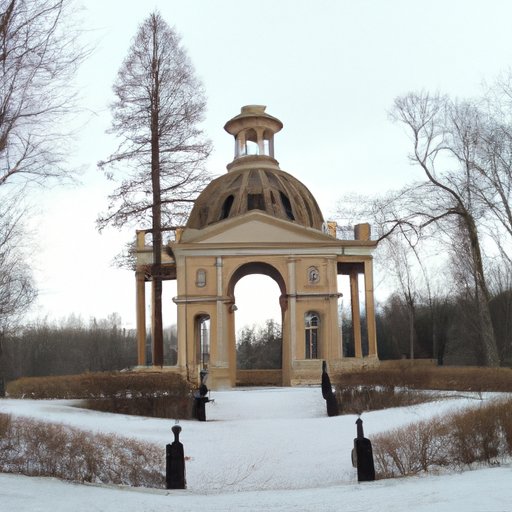Introduction
Follies are ornamental structures that have long been used to enhance the beauty of gardens and landscapes. While often mistaken for functional buildings, follies are purely decorative, and serve no purpose beyond providing visual interest. This article will explore the history of follies in architecture, examine their influence on modern design, and analyze the aesthetics and functionality of these unique structures.
Historical Overview of Follies in Architecture
The use of follies in landscape design can be traced back to the 18th century. At this time, wealthy landowners began creating elaborate gardens and parks with ornamental structures such as temples, grottos, pavilions, and gazebos. These structures were designed to provide a sense of drama and grandeur, and to impress visitors to the estate.
Over time, follies became popular during different architectural periods, from the neoclassical style of the 18th century to the art deco and modernist styles of the 20th century. During this period, many follies were designed with a whimsical or fantastical theme, such as castles, Chinese pagodas, and Egyptian pyramids.

Examining the Influence of Follies in Modern Design
Today, follies continue to be used in contemporary architecture and design. Many architects and designers incorporate elements of folly into their projects, using them to create eye-catching features or to add a sense of playfulness to a space. In addition, some designers use follies to make a statement about a particular idea or concept.
For example, the “Folly for a Flyover” project by London-based architects Assemble was designed to draw attention to the negative impact of highways on the local environment. The project consists of an abstract structure made from recycled materials, which is intended to draw attention to the highway and its effects on the surrounding area.

Exploring the Role of Follies in Landscape Design
Follies are often used in landscape design to enhance a garden or park. They can be used to create focal points, to define spaces, or to provide shade and shelter. In addition, follies provide an opportunity for designers to experiment with different materials, colors, and textures, and to create unique and interesting features.
For example, the Blenheim Palace in Oxfordshire, UK, features several follies, including the Grand Cascade and the Temple of Diana. These structures were designed to add visual interest to the estate and to provide pleasing views for visitors. Similarly, the Château de Versailles in France includes several follies, such as the Grotto of Tethys and the Belvedere, which were designed to enhance the beauty of the palace grounds.
Analyzing the Aesthetics of Follies in Architecture
The aesthetics of follies in architecture vary depending on the style of the structure and the materials used. For example, classical follies tend to feature symmetrical designs and ornate details, while modern follies may be more abstract and minimalist. Similarly, traditional materials such as stone and brick are often used for classical follies, while modern materials such as steel and glass may be used for contemporary designs.
In addition, the color and texture of a folly can also be used to create a desired effect. For instance, bright colors may be used to create a cheerful atmosphere, while muted tones may be used to evoke a sense of tranquility. Similarly, rough textures may be used to create a rustic feel, while smooth surfaces may be used to create a sleek and modern look.

Investigating the Functionality of Follies in Architecture
Although follies are primarily decorative, they can also be used to define space and provide shelter. For example, a folly may be used to separate one area of a garden from another, or to provide shade in a sunny spot. Additionally, some follies may be used as seating areas or even as small gathering places.
In addition, some follies may be used to add elements of surprise and mystery to a space. For example, a folly may be used to hide a secret garden, or to create an unexpected view. This can be particularly effective in larger gardens and parks, where a folly can be used to create a sense of intrigue and exploration.
Conclusion
Follies have long been used in architecture to add visual interest and to create dramatic and whimsical elements. From the neoclassical follies of the 18th century to the modern designs of today, follies continue to be an important part of landscape design. They offer designers the opportunity to experiment with different materials and colors, and to create unique and visually appealing features. Furthermore, follies can be used to define space and provide shelter, as well as to add elements of surprise and mystery to a space. As such, follies remain an important part of architectural design.
This article has explored the history of follies in architecture and examined their influence on contemporary design. It has also analyzed the aesthetics and functionality of these unique structures. Further research could focus on specific examples of follies in different architectural periods, or on the use of follies in particular cities or regions.
(Note: Is this article not meeting your expectations? Do you have knowledge or insights to share? Unlock new opportunities and expand your reach by joining our authors team. Click Registration to join us and share your expertise with our readers.)
